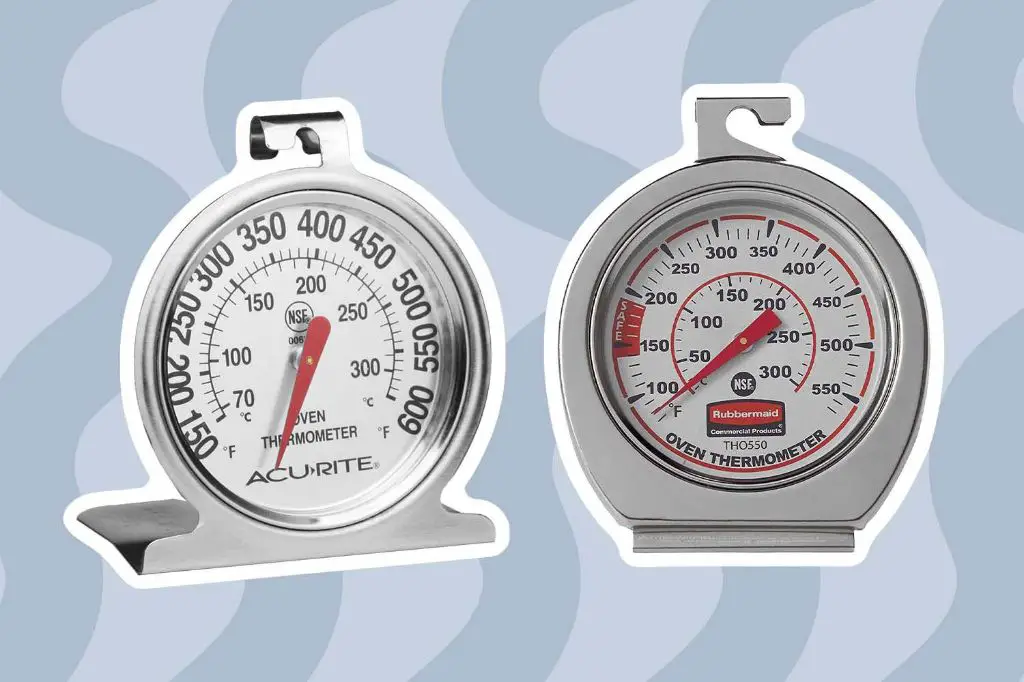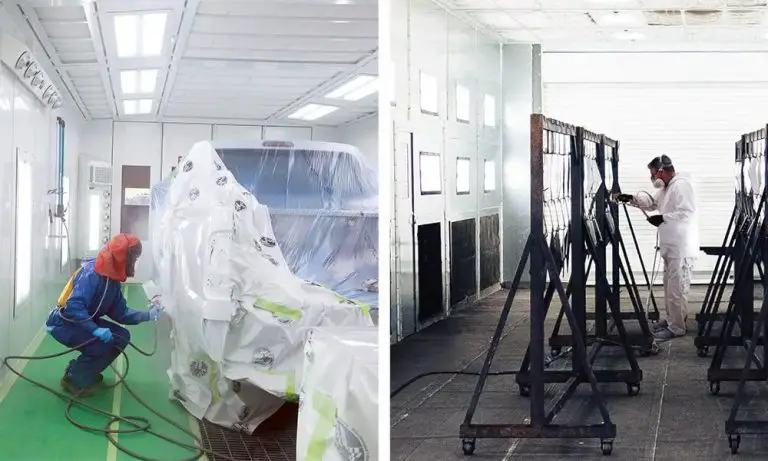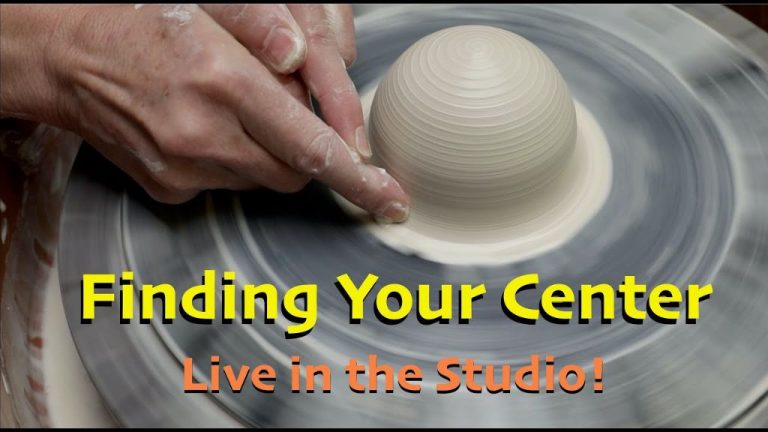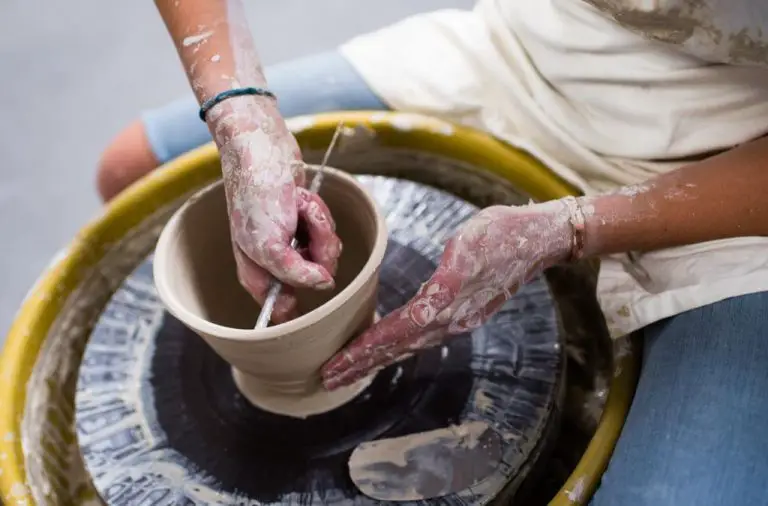How Accurate Are Oven Thermometers?
Oven thermometers are designed to measure the air temperature inside an oven cavity to ensure accuracy and consistency when following baking recipes. Having an accurate oven temperature is crucial for achieving the desired bake on cakes, cookies, breads, and other baked goods. If an oven runs too hot or too cold, it can lead to undesirable results like burnt edges or undercooked centers. Oven thermometers allow bakers to monitor and adjust oven temperatures as needed to improve consistency.
Oven thermometers typically consist of a dial or digital display showing the temperature, attached to a probe made of metal or thermo-resistant material. The thermometer can either hang or sit inside the oven cavity during preheating and baking. Some have alarms to indicate when the target temperature is reached. Using an independent thermometer is recommended over relying solely on an oven’s built-in thermostat, which can lose calibration over time. This article will examine how accurate different types of oven thermometers are in real-world conditions.
How Oven Thermometers Work
Oven thermometers measure oven temperature using a bimetallic strip inside the thermometer. This strip is made of two different metals that expand at different rates when they are heated. The different expansion rates cause the strip to bend one way or another, which moves the needle on the thermometer gauge to indicate the temperature.1
The bimetallic strip is calibrated to measure temperatures typically between 100-600°F, which covers the range of temperatures used for baking. It works similarly to the thermostat in your oven, expanding and contracting based on heating and cooling to regulate oven temperature.2 By using an independent oven thermometer, you can double check that your oven’s thermostat is accurately displaying the true oven temperature.
Testing Methodology
Consumer Reports rigorously tested the accuracy of several popular oven thermometers to provide unbiased reviews and help consumers make informed purchasing decisions (Consumer reports oven thermometer test online). Their testing methodology focused on evaluating each thermometer’s ability to accurately read oven temperatures under real-world cooking conditions.
They tested a range of oven thermometer models, including basic dial thermometers, digital thermometers, and “smart” connected thermometers. Each thermometer was placed inside an oven set to various temperatures ranging from 170°F to 550°F. The thermometers were left to stabilize for over 15 minutes at each temperature before the readings were recorded and compared to the actual oven temperature as measured by a professional reference thermometer (consumer reports meat thermometer).
Multiple units of each thermometer model were tested to account for potential variances between units. The testing focused on accuracy within the normal cooking range of most recipes (250°F to 500°F). Readings at high, low, and mid-range temperatures were evaluated to determine if the thermometers remained accurate across the full cooking spectrum. Thermometers were tested both when placed on oven racks and oven walls to simulate typical positioning.
Through repeated controlled testing under real-world conditions, Consumer Reports was able to definitively evaluate the accuracy and reliability of the most popular oven thermometer models on the market today (best wireless meat thermometer). Their rigorous methodology provides consumers with trustworthy recommendations based on empirical performance data.
Test Results
Testing has shown that most oven thermometers are quite accurate when used properly. According to the oven thermometer accuracy test done by Fred’s Appliance Academy, various brands of oven thermometers measured within 5-10 degrees Fahrenheit of the actual oven temperature. The type of oven (gas vs. electric) and placement within the oven can impact accuracy by a few degrees. Of the thermometers tested, the Rubbermaid and Cooper brands tended to be the most accurate.
When testing oven temperature accuracy, it’s important to place the thermometer in the center of the oven and preheat fully before taking a reading. Allowing the thermometer to remain in the oven during preheating results in the most accurate measurement, as advised by ThermoPro. The oven door should remain closed as much as possible during testing. Overall, most quality oven thermometers provide a close enough reading for home baking purposes when used properly.
Factors Affecting Accuracy
There are a few key factors that can affect the accuracy of oven thermometers:
Placement in the Oven – Where you place the thermometer in the oven can impact how accurately it reads the true oven temperature. The temperature tends to vary throughout different areas of the oven, with some spots being hotter or cooler. According to Thermoworks, the most accurate readings usually come from placing the thermometer towards the back of the oven, away from the door and coils.
Analog vs Digital – Digital oven thermometers tend to provide more precise and consistent temperature readings than old-fashioned analog thermometers with mercury or alcohol. Analog thermometers can be less accurate if not angled properly or if the liquid expands unevenly. Well-made digital thermometers with precise sensors offer greater accuracy.

Quality – As with most products, the quality of the materials and manufacturing process impacts the accuracy. Cheap oven thermometers made with inferior parts, sensors, and craftsmanship tend to be less accurate and reliable. Higher-end oven thermometers from reputable brands tend to provide superior accuracy over time.
Recommendations
When selecting an oven thermometer, look for a digital model rather than a classic dial thermometer for optimal accuracy. Digital thermometers allow you to see the exact temperature reading clearly on an LCD screen, avoiding any misreading of analog dials.
It’s also advised to purchase an oven thermometer that has been pre-tested and calibrated by the manufacturer. Pre-tested thermometers will come with an accuracy guarantee, often within 1-2 degrees. This ensures you’ll get a reliable reading from the start.
Proper placement of the oven thermometer is also key. Position the thermometer in the center of the oven, avoiding the edges and rear wall where hot and cool spots can develop. Place it on the center rack, suspended in mid-air. This will allow air to circulate around the probe, giving the most accurate reading of the true oven temperature.
By selecting a digital, pre-tested thermometer and placing it in the optimal position, you can feel confident your oven thermometer will provide precise, consistent temperature readings to help you cook and bake your best.
Alternatives
There are some alternatives to oven thermometers that can be used to monitor oven temperature:
Oven Thermostat
Many modern ovens come with a built-in thermostat and temperature display. This gives you a reading of the current oven temperature without needing a separate thermometer. However, some experts caution that built-in thermostats may not be as accurate as a dedicated oven thermometer placed inside the oven.
Infrared Thermometers
Infrared thermometers, or “point and click” thermometers, can also be used to measure oven temperature. You simply point the infrared thermometer at a surface inside the oven through the glass oven door and it provides a reading of the temperature. However, this only measures the surface temperature rather than the ambient air temperature throughout the oven. It also requires repeatedly opening the oven door, which can allow heat to escape and affect baking accuracy.
Maintaining Accuracy
To keep your oven thermometer accurate over time, follow these tips for cleaning and calibration:
Clean the thermometer probe regularly by wiping it down with a damp cloth to remove any food residue or grease that could affect temperature readings. Avoid submerging oven thermometers in water. Refer to the manufacturer’s instructions for proper cleaning methods.
Test the accuracy of your oven thermometer periodically by placing it alongside an instant-read thermometer inside the oven during preheating. The oven thermometer should register within around 5-10°F of the instant-read thermometer once the oven comes up to temperature. If not, the oven thermometer may need to be recalibrated or replaced.
Some digital oven thermometers have a calibration function you can use to recalibrate the thermometer to match a known accurate reference thermometer. Refer to your model’s instructions for details on the calibration procedure.
Replace your oven thermometer every 1-2 years or according to manufacturer guidelines. The sensor or electronics can drift over time. Getting a new thermometer ensures the best accuracy.
Avoid hanging oven thermometers too close to heating elements, as this can throw off their readings over time. The optimal placement is on the center or side oven walls.
Summary
In summary, while most oven thermometers tend to be fairly accurate, a number of factors can impact their precision. Perfect oven temperature accuracy is quite difficult to achieve, but there are some key takeaways:
Testing shows that digital probe thermometers are generally the most accurate, while spring dial thermometers are the least precise. Oven thermometer accuracy can fluctuate by +/- 5-15°F in many models.
Placement location makes a big difference, with oven thermometers being most accurate near the center and less so along the edges or rear. Older ovens and poor calibration contribute to reduced accuracy.
To maximize precision, choose a high quality digital thermometer placed in the center of the oven. Allow the oven to fully preheat before judging temperature accuracy. Test oven temperature periodically and recalibrate as needed. While perfection is unlikely, following these tips will get oven temperatures reasonably close to the target.
References
The Best Oven Thermometers of 2024 – Reviewed. (2023, December 22). Reviewed. Retrieved February 26, 2023.
The Best Oven Thermometers. (2022, April 14). America’s Test Kitchen. Retrieved February 26, 2023, from https://www.americastestkitchen.com/equipment_reviews/1638-oven-thermometers





